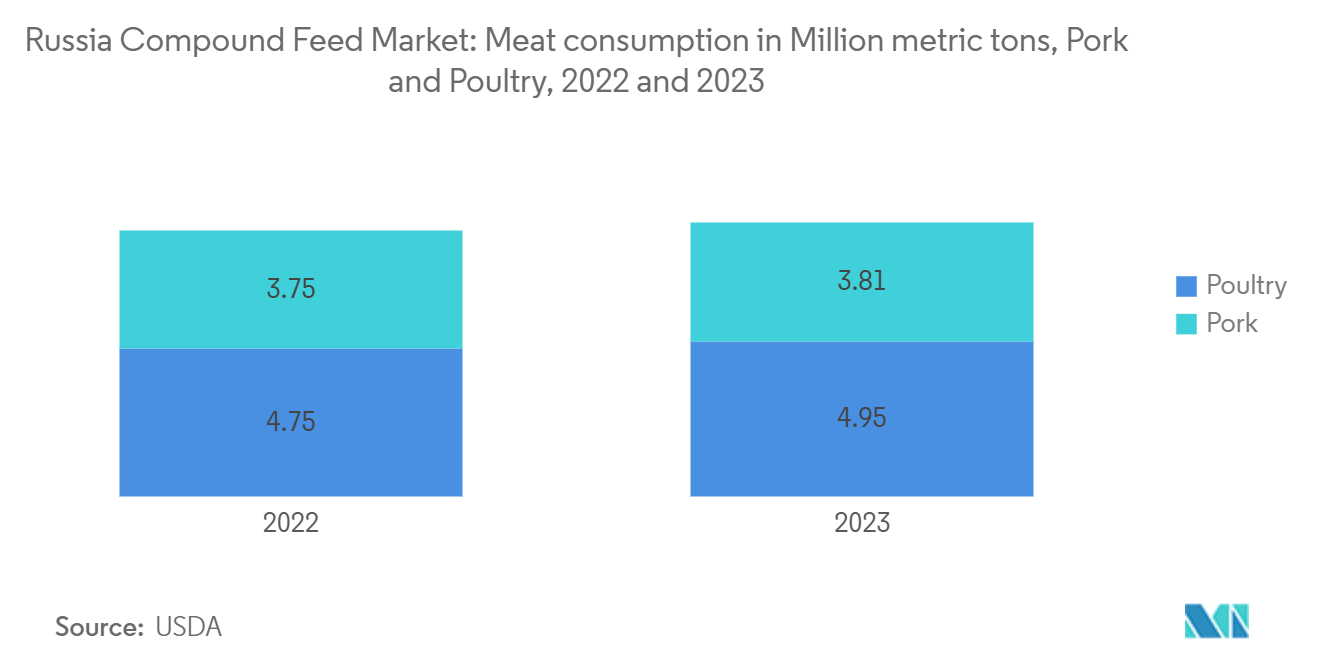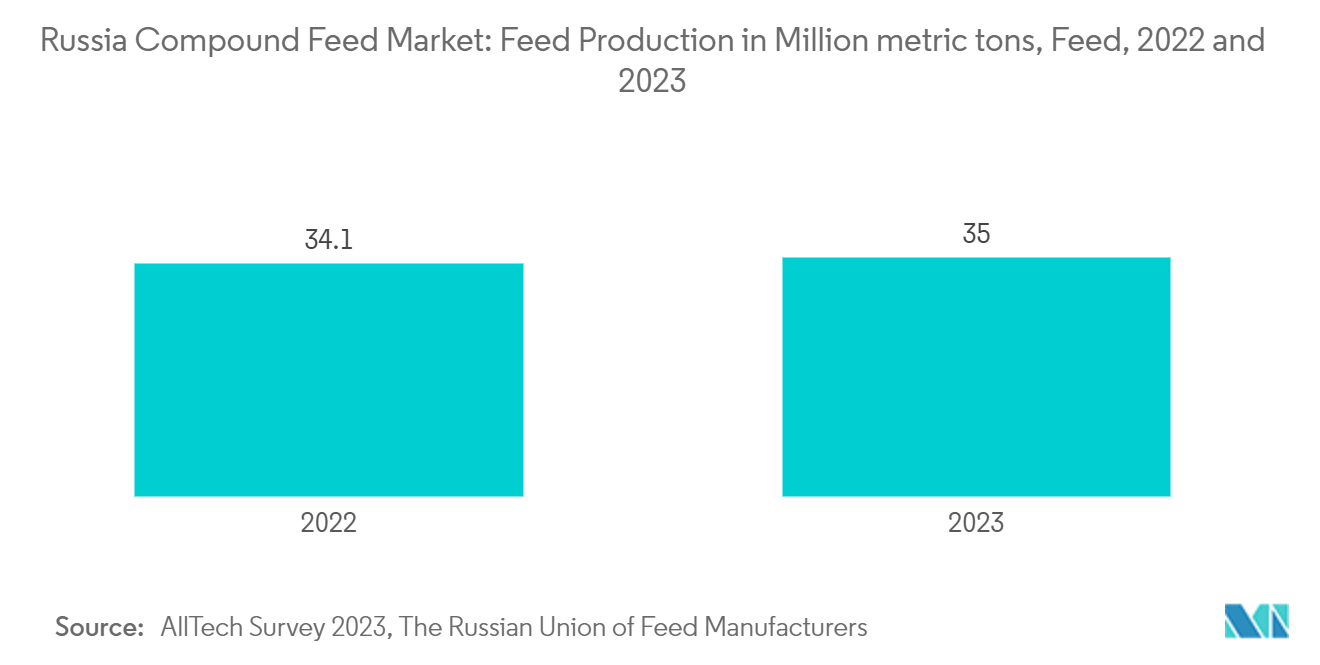Market Trends of Russia Compound Feed Industry
Industrialization Of The Livestock Sector
The Russian compound feed market is experiencing steady growth, driven by increasing meat consumption, particularly pork and poultry. USDA FAS reports indicate that pork consumption in Russia rose from 3.75 million metric tons in 2022 to 3.81 million metric tons in 2023, reflecting higher disposable incomes, urbanization, and changing dietary preferences. Poultry meat consumption has also increased significantly, from 4.75 million metric tons in 2022 to 4.81 million metric tons in 2023, with projections suggesting it will reach 4.95 million metric tons by the end of 2024. This trend is supported by poultry's affordability, perceived health benefits, and increased availability of processed poultry products.
The expanding livestock sector, driven by growing consumer demand for meat, is increasing the need for high-quality, specialized compound feed. This feed is essential for efficient and sustainable livestock production, ensuring optimal growth and productivity across key segments, including beef cattle, dairy cattle, poultry, and swine. The transition toward industrialized farming practices in Russia further emphasizes the importance of nutritionally balanced feed in meeting the demands of modern livestock production.
As the livestock industry continues to expand, the compound feed market in Russia is positioned for continued growth. The emphasis on improving feed quality and supporting the industrialization of meat production highlights its crucial role in meeting the country's protein needs. With the livestock sector playing a significant role in Russia's agricultural growth, the compound feed market remains a key component of its developing agri-food ecosystem.

Increased Compound Feed Production
Russia's compound feed market has experienced significant growth, propelled by the country's strong cereal and grain production, which are essential raw materials for feed. FAO statistics show Russia's cereal production increased from 117.6 million metric tons in 2021 to 153.1 million metric tons in 2022. This increase has improved the availability of quality inputs for feed manufacturing, allowing Russia to serve both domestic and international markets effectively. The growing demand for meat and related products has further increased the need for high-quality feed, establishing Russia as a key player in the global animal feed industry.
Compound feed production in Russia has shown consistent growth. According to the Ministry of Agriculture of Russia, feed production increased by 2.6% in 2023, reaching 35 million metric tons, compared to 34.1 million metric tons in 2022. This steady rise demonstrates the country's commitment to meeting the increasing demand for animal feed. The aquaculture feed sector has shown significant progress, with production increasing by 39% between January and November 2022 -2023, reaching 48,000 metric tons, as reported by the Russian Federal Fisheries Agency (Rosrybolovstvo). These trends indicate the diversification of feed production to meet various livestock and aquaculture needs.
Vertically integrated agricultural manufacturers play a crucial role in Russia's feed market, controlling nearly 75% of feed production capacities as of 2023, according to the Russian Union of Feed Manufacturers. This integration ensures efficient supply chain management, from raw material sourcing to final feed production. These structural advantages enhance operational scalability and the ability to respond quickly to market demands.
The Russian Union of Feed Manufacturers projects strong growth in specific segments. By 2025, poultry feed production is projected to increase by nearly a third to 22 million metric tons, while cattle feed production is anticipated to rise by 28% to 3.8 million metric tons. These forecasts highlight the market's positive trend, driven by the increasing focus on enhancing livestock productivity. The rising production of compound feed reflects Russia's strategic efforts to strengthen its position in the global feed market, leveraging its strong agricultural base and growing demand for high-quality animal products.


